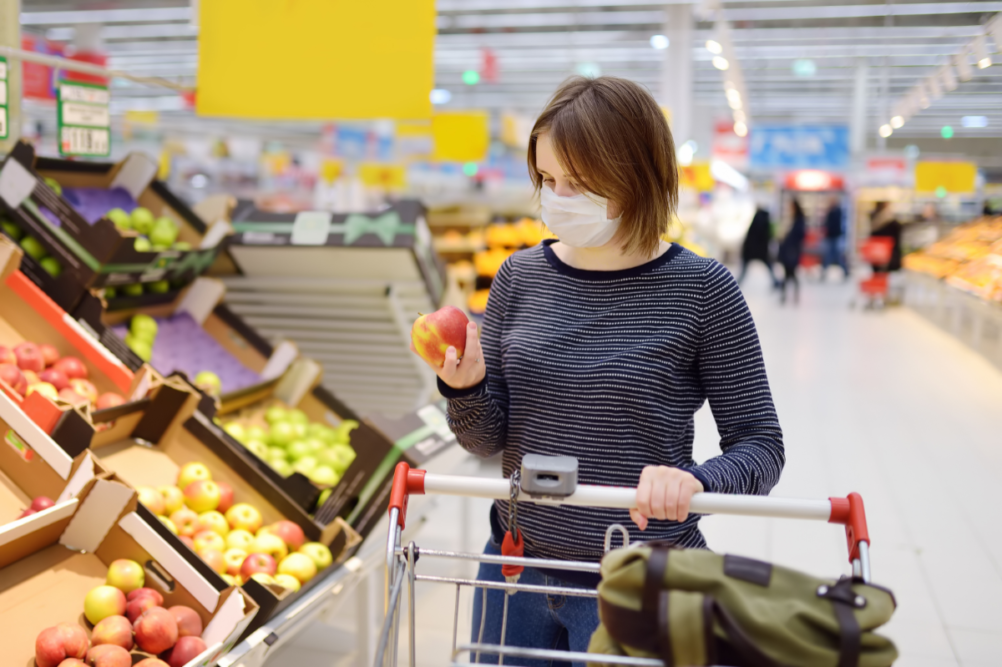NEW YORK – A report released by Nielsen in August shows that consumers have stopped responding to the pandemic news cycle with their wallets.
When COVID-19 emerged in the first quarter of the year, sales of food staples and sanitizing supplies skyrocketed in step with new reports of the virus spread. But over time, purchasing correlation has fallen away from coronavirus news and begun correlating with factors beyond the virus itself, including reopening of businesses and changes in restricted living conditions.
In studying the shift, the Nielsen Intelligence Unit identified four emerging patterns that will continue to predict consumer purchases as the pandemic moves forward, all motivated by rising unemployment and economic concerns:
-
Basket Reset: What consumers will buy will be impacted by new regulations, and consumers will need to account for emerging basket essentials, stretching dollars to meet old and new needs. Consumers will more carefully manage basket size as they grow accustomed to keeping a larger and broader stock of “essential” products.
-
Homebody Reset: Where consumption will happen will depend on business closures/openings and community restrictions. Consumers will prioritize in-home spending over out-of-home expenses. More consumers explore and try self-service needs to personalize and amplify care and meal solutions at home.
-
Rationale Reset: Why consumers will make purchases will depend on their willingness to spend on luxuries, which is limited by financial and safety factors. Consumer priorities will shift as well as the way they spend spare cash. Consumers will seek luxuries within FMCG to compensate for travel and entertainment they can no longer safely enjoy.
-
Affordability Reset: How much consumers will spend is being driven by massive unemployment spikes, economic uncertainty and declining consumer confidence. Consumers will become more risk averse, seeking products that deliver value, quality and peace of mind. Price will become more of a purchase driver to consumers as product availability improves.
“Consumer behavior is spinning in fundamental ways right now,” said Scott McKenzie, Nielsen Intelligence Unit leader. “The unique macro conditions of a pandemic driving economic recession are forcing consumers to rethink how they shop and what they buy. Habits are changing in days and weeks. Typically, we, as humans, have months or years to adjust to new conditions. But that’s no longer the world we live in. The implication for brands trying to meet the new needs of consumers is that they must be very focused and very fast in their response.”
In Nielsen’s recently released August US Consumer Price Index, findings suggest that a reduction in grocery store promotions is fueling a growing trend in cost of groceries. Key findings from that date that included instore and online sales were:
-
In August of 2020 consumers paid 4.1% more for the same popular grocery items than they did in August of 2019.
-
Fewer promotional offers are being made available to shoppers, and this is the reason their grocery bills are higher than this same time last year.
-
On average, 31.4% of all units sold in the US are purchased on some sort of promotion. In August 2020, 26.2% of units were sold on promotion. This 5.2% decline across the entire store means shoppers have less opportunity to purchase items on sale and save at the register. For shoppers, this means they are paying more than the pre-COVID time period.
-
This is most prevalent in the grocery department, where units sold on promotion are down 10% vs. pre-COVID levels.
-
In the household care department, the portion of units sold on instore promotion are down 12% vs. pre-COVID levels.
-
The meat department has seen a resurgence of promotional activity, but this has done little to offset the total basket expenditure and ease the cost for shoppers and their grocery bills.

